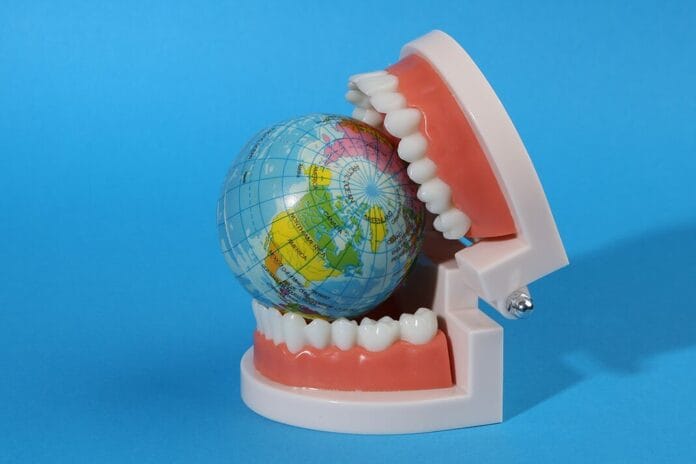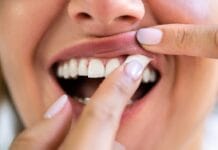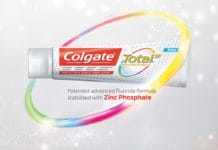A quote attributed to author H. Jackson Brown’s mother in his book P.S. I Love You reads, “Twenty years from now you will be more disappointed by the things you didn’t do than by the ones you did do. So throw off the bowlines! Sail away from the safe harbor. Catch the trade winds in your sails. Explore. Dream. Discover!”
I recently came across this quote for the second time in my life and felt a deep stirring of recognition about the truth of the sentiment. Almost a decade ago, this quote drew me in when I was at a crossroads, and it helped give me the courage to leave my dental hygiene job in the United States and live abroad.
Research shows that not just visiting, but actively immersing yourself in another country can significantly impact your sense of self. Self-concept has been shown to provide a variety of benefits, including improved psychological well-being, better stress-coping mechanisms, and increased job performance.1
While the idea of living abroad may not make sense or appeal to each person reading this, I truly believe the benefits and life-changing qualities of this option are worth considering.
I was at a time when I strongly needed a break from my dental hygiene career, so I did not pursue hygiene opportunities abroad. However, for those who feel content with their career but have a deep desire to see more of the world, below are some ideas for working abroad.
Be a Paid Hygienist in a Foreign Clinic
Depending on the country, obtaining citizenship and/or a work permit or visa may be required before applying to work as a dental hygienist. Many countries may require a whole new dental hygiene education and licensing process, while others may not recognize dental hygiene as a career (surprising, yes).
Here are just some examples of countries that make it fairly straightforward to use your education and license from the United States to practice abroad.
Denmark
Denmark has specific rules for the recognition of dental hygienist qualifications depending on the country, including the United States. The first step is to submit an online application for your education approval along with the required documents. Required documents include proof of identity (passport), a curriculum vitae (CV) listing qualifications and work experience, a diploma, academic transcripts, and documentation of at least 12 months of work experience in dental hygiene if your education is more than 6 years before your application for Danish authorization. Additional documentation may be necessary. The assessment process can take up to 6 months once all the required documentation is received.2
If you receive Danish authorization, you need to pass the Danish language test, showing the ability to understand, speak, read, and write Danish at a certain level.2
Once finished, you are eligible for employment for adaptation and training purposes. This is where you are responsible for finding employment that is eligible for training purposes, where you are required to work full-time for at least 6 months to assess your clinical and communication skills.2
After you have successfully completed the employment for adaptation and training purposes with positive assessments, the Danish Patient Safety Authority will grant you Danish authorization.2
Sweden
Sweden has its own detailed process for recognizing dental hygiene qualifications of those from the United States. To begin, applicants must have their education and hygiene license assessed by the Swedish National Board of Health and Welfare. This includes an application, a valid passport, a copy of a diploma, and academic transcripts. The assessment process takes about 3 months.3
Following the application, the steps take more time, including becoming proficient in the language. After studying Swedish, applicants take a proficiency test to demonstrate their language skills. It’s worth noting that proficiency in Danish or Norwegian is also acceptable.3
If this exam is passed, applicants then attend courses concerning Swedish laws and regulations. The applicants then need to find a clinic that can provide them with 6 months of training in Sweden’s specific dental processes.3
Finally, the manager or supervisor of the clinic where the hygienist trained signs a document verifying that the process is complete. This, along with all other documentation accumulated to this point, then needs to be mailed directly to the Swedish National Board of Health and Welfare for official hygiene licensing approval and distribution.3
Ireland
Working abroad in Ireland is a more straightforward option for those from the United States, since learning the language is less of a factor. However, an English language proficiency test is required to assess listening, reading, writing, and speaking proficiency.4
Ireland requires that U.S. hygienists apply for assessment by the Dental Council of Ireland. The documents needed to apply for the assessment are a passport, a completed application form, a detailed work history, a language proficiency test certificate, a photocopy of a hygiene license, academic transcripts and a course syllabus (a detailed outline of what your qualification entailed that matches transcripts), professional status letters of good standing, and a registration fee. This assessment process can take 3 months.4
If found eligible, applicants can obtain registration into the Register of Dental Hygienists.4
Norway
Norway may recognize dental hygienist qualifications from certain countries, including the United States. The Norwegian Directorate of Health assesses applications for registration. For most applications, hygienists must upload their diploma/certificate, academic transcripts, a detailed overview of educational curriculum (additional documentation may be required), dental hygiene license, and, depending on whether you are applying for temporary or permanent authorization, you may need proof of relevant work experience.5
While not immediately clear on the Norwegian Directorate of Health website, it appears that once the documents are authorized, they will issue a Norwegian hygiene license without an extra training process.5
Canada
To practice in Provinces in Canada, graduates of United States programs accredited by the American Dental Association Commission of Dental Accreditation (CODA) are eligible to take the Canadian National Dental Hygiene Certification Examination (NDHCE). An application for registration is also required, including educational transcripts and your diploma sent directly from the educational institution.6
Upon successful completion of the NDHCE, applicants are eligible to register with the provincial or territorial regulatory authority where they intend to work, which may include additional requirements.6
New Zealand
Applying for registration as a dental hygienist in New Zealand has different pathways depending on a prescribed qualification. Applicants from the United States who have received their degree or diploma in dental hygiene from a CODA-accredited program and passed the U.S. National Board Dental Hygiene Examination (NBDHE) are recognized and considered to have met the prescribed qualifications to apply for registration. However, exclusions may be placed on your practice in certain areas if your training did not include specific areas of practice, such as local anesthesia, radiography, and orthodontic procedures.7
The first step is to use the online assessment tool on their website, which will then direct the applicant to the proper form, required documentation, and the application fee to submit to the Dental Council for approval.7
Australia
To work in Australia as an overseas hygienist, there are several requirements for registration. The requirements start with obtaining a valid work visa and passing an international criminal history check. Information on different visas can be found on the Australian Department of Home Affairs website. It’s worth noting that it is not usually required to have a job offer before a work permit is issued.8
Next, overseas dental hygienists must undergo an assessment process, which involves 3 stages. The first step is the initial assessment of eligibility, which includes an application, supporting documentation, and a fee. Required documentation consists of a current passport, passport photo, academic transcripts, an educational syllabus (description of key learning objectives for each subject), proof of a United States dental hygiene license, and a letter of good standing sent directly from the state dental board you are licensed through to the Australian Dental Council. The timeframe for the initial assessment is approximately 8 weeks.9
If you are found eligible, the next step is to apply to take a written examination. After taking the exam, the results are released in about 6 weeks. The timeframe from submitting an application to obtaining results is approximately 5 months.9
After successfully passing the written exam, the final step in the assessment process is to apply to take the practical examination. Once this exam is taken, the results are released in about 6 weeks. The timeframe from submitting an application to obtaining results is approximately 4 to 7 months.9
Upon successful completion of the assessment process, an Australian Dental Council certificate is awarded, confirming eligibility to apply for registration with the Dental Board of Australia. Proficiency in English is also necessary, assessed through the Occupational English Test, which must be taken before applying for registration.8,9
Work at a Military Base
Many U.S. military bases, hospitals, and clinics worldwide employ healthcare professionals, including dental hygienists, to care for service members and their families through the Military Health System and Defense Health Agency. For specific requirements and job opportunities, you can search job position databases through the Military Health System.
Teach Dental Hygiene Abroad
Universities and research institutions abroad may have opportunities for dental hygienists in teaching or research roles. These positions may require advanced degrees or specialized skills, and some may be paid, while others are volunteer-based. One example is Health Volunteer Overseas, which helps place you in an overseas dental program in need of teaching assistance, often in resource-scarce countries.
Volunteer Clinically as a Hygienist
While locating and establishing a paid hygiene position abroad can sometimes be more difficult, volunteer opportunities are plentiful and constantly updated. Some non-governmental organizations operate dental clinics in various countries, providing dental care to local communities. Examples include organizations like International Medical Relief, World Health Dental Organization, and Global Dental Relief.
If you are hoping to travel with a smaller, more local group, try looking into your community’s faith-based organizations. For example, years ago, I went to Uganda to provide hygiene services for a non-profit, faith-based children’s home and school program that my friends from church started. This opened my eyes to the ever-growing number of health organizations worldwide attempting to aid those in need.
Lastly, another option is to look up local university programs that may help underserved communities abroad.
In Closing
It has only been within the last 100 years that the average person has been able to travel internationally easily and comfortably (and domestically in a speedy way). Countless generations of humans before us were unable to acquaint themselves with new cultures, taste foreign foods, and see exotic architecture. Hygienists have a unique skill that could help them take advantage of the incredible opportunities we have in our modern world.
Being able to help the oral health of the world around us is hugely empowering and is definitely an option worth considering.
Before you leave, check out the Today’s RDH self-study CE courses. All courses are peer-reviewed and non-sponsored to focus solely on high-quality education. Click here now.
Listen to the Today’s RDH Dental Hygiene Podcast Below:
References
-
- Adam, H., Obodaru, O., Lu, J.G., et al. The Shortest Path to Oneself Leads Around the World: Living Abroad Increases Self-Concept Clarity. Organizational Behavior and Human Decision Processes. 2018; 145: 16-29. https://willmaddux.web.unc.edu/wp-content/uploads/sites/15846/2018/02/OBHDP-Culture-and-Self.pdf
- Dental Hygienist: Non-EU Countries. (n.d.). Danish Patient Safety Authority. https://en.stps.dk/health-professionals-and-authorities/registration-of-healthcare-professionals/dental-hygienist/non-eu-countries
- Application for a License in Health Care: Obtaining a License if You Are Educated Outside E.U. and EEA. (2020, May 6). Socialstyrelsen (Swedish National Board of Health and Welfare). https://legitimation.socialstyrelsen.se/en/licence-application/outside-eu-eea/dental-hygienist-educated-outside-eu-eea/
- Auxiliary Dental Workers. (n.d.). Dental Council (Ireland). https://www.dentalcouncil.ie/registration/auxiliary-dental-workers
- Dental Hygienist. (n.d.). Norwegian Directorate of Health. https://info.altinn.no/en/forms-overview/The-Norwegian-Directorate-of-Health-approval-of-foreign-professional-qualifications/dental-hygienist/
- US Dental Hygiene Students and Graduates. (n.d.). Federation of Dental Hygiene Regulators of Canada. https://www.fdhrc.ca/pages/DHpractice/International-Grads/US-Graduates-in-Dental-Hygiene/
- Pathways for Gaining Registration as a Dental Hygienist in New Zealand. (n.d.). Dental Council (New Zealand). https://dcnz.org.nz/i-want-to-practise-in-new-zealand/dental-hygienists/
- Dental Hygiene, Dental Therapy, and Oral Health Therapy Assessments. (2025). Australian Dental Council. https://adc.org.au/assessments/hygienists-and-therapists/
- Working in Australia. (n.d.). Dental Hygienists Association of Australia. https://dhaa.info/DHAAWebsite/DHAA_Web/About/Working-in-Australia.aspx










